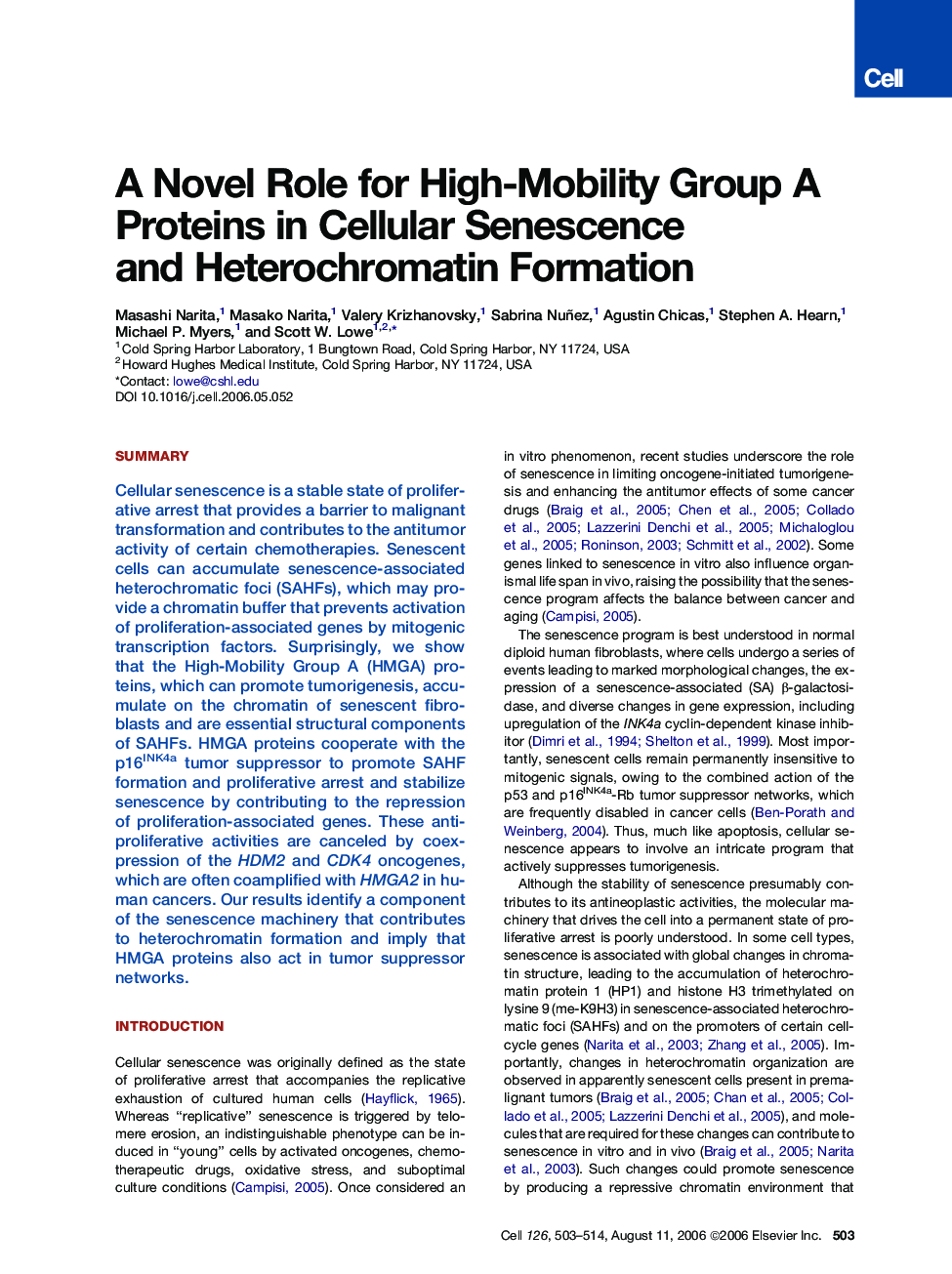| Article ID | Journal | Published Year | Pages | File Type |
|---|---|---|---|---|
| 2038719 | Cell | 2006 | 12 Pages |
SummaryCellular senescence is a stable state of proliferative arrest that provides a barrier to malignant transformation and contributes to the antitumor activity of certain chemotherapies. Senescent cells can accumulate senescence-associated heterochromatic foci (SAHFs), which may provide a chromatin buffer that prevents activation of proliferation-associated genes by mitogenic transcription factors. Surprisingly, we show that the High-Mobility Group A (HMGA) proteins, which can promote tumorigenesis, accumulate on the chromatin of senescent fibroblasts and are essential structural components of SAHFs. HMGA proteins cooperate with the p16INK4a tumor suppressor to promote SAHF formation and proliferative arrest and stabilize senescence by contributing to the repression of proliferation-associated genes. These antiproliferative activities are canceled by coexpression of the HDM2 and CDK4 oncogenes, which are often coamplified with HMGA2 in human cancers. Our results identify a component of the senescence machinery that contributes to heterochromatin formation and imply that HMGA proteins also act in tumor suppressor networks.
